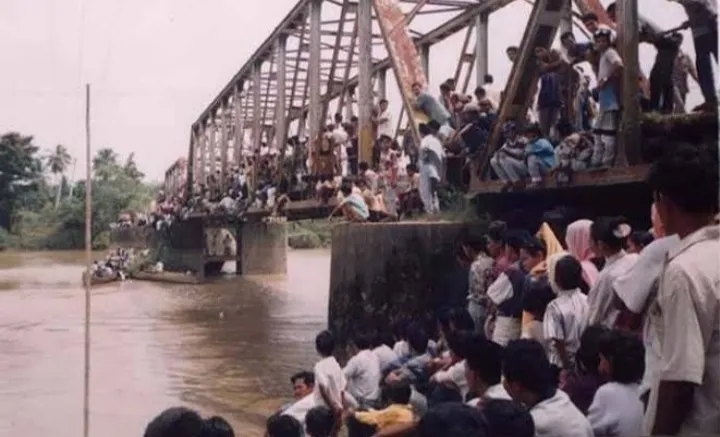
We present this story not to bring up old wounds, when the Aceh conflict was still raging, but to learn so that war does not repeat itself. The tragedy of Idi Cut is only a bit of a sad story, from the many allegations of past human rights violations in Aceh that have not been completed. The Story of the Tragedy of Idi Cut, Aceh: Blood Splattered at Krueng Arakundo (2) KontraS Aceh Coordinator, Hendra Saputra during an action to commemorate the 21 years of the Idi Cut Tragedy. Photo: Suparti/acehkini How did the tragedy actually happen? The Aceh Human Rights NGO Coalition documented the testimonies of residents in the Arakundo Tragedy, as well as several other cases of human rights violations in Aceh in the book 'FAKTA BICARA: Revealing Human Rights Violations in Aceh 1989-2005' published in April 2011. I (Adi Warsidi) and Nashrun Marzuki were the editors of the book. , in charge of planning to overseeing the reportage carried out by Kahar Muzakar and Mellyan. Here's the continuation story: The Story of the Tragedy of Idi Cut, Aceh: Blood Splattered at Krueng Arakundo (2) (1) Talking fact book cover: Akmal Van Roem/Dok. Aceh Human Rights NGO Coalition Second Testimony When the victim's body was dumped into Krueng Arakundo, a resident of Julok District named Badriah became one of the witnesses. He lives not far from the historic bridge, only 300 meters. Towards dawn, February 3, 1999, Badriah was inside her house when she heard the officers say “continue” and then heard the sound of rubbing stones. Badriah was curious, then peeked from behind the curtains of the house. At that time the power went out. There are three trucks parked in front of his house. Two trucks were filled with soldiers, while the other looked empty. Then one of the trucks headed for the Arakundo Bridge, while two trucks were still in front of his house and seemed busy cleaning something. In front of Badriah's house, there is a 20 liter jerry can of water used by the authorities to flush the road. Then they left the Arakundo Bridge towards Idi Cut. Not long after that, there was a fishy smell coming from the front of his house. The other witness was named Roslina. He said the blood splattered around the Arakundo Bridge was trying to be covered with sand. Most of the residents around the river make a living as sand miners, the results are usually piled on the banks of the river around the bridge. At 07.00 WIB, hundreds of people gathered to see the dried drops of blood along the road to Arakundo Bridge. By noon, residents began to search for bodies in the Arakundo River. They found one of them, named Irwansyah Bin Usman, (22 years old), a resident of Kapai Baro Village, Darul Aman District, East Aceh. His body was found in burlap with a name on it. The jute is still kept by his wife.
Thank You